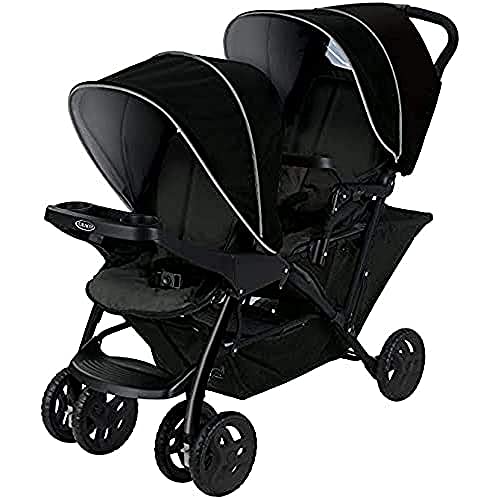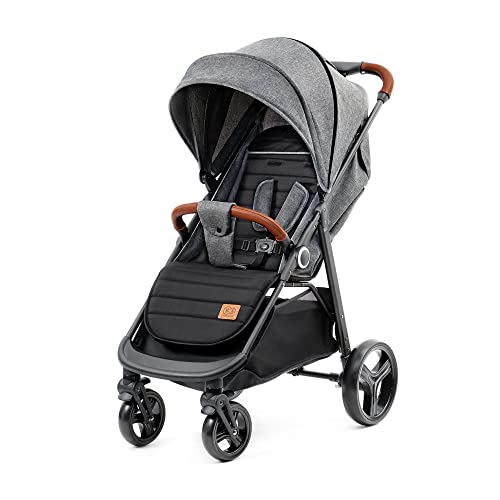 Choosing a Jogging Pushchair
Choosing a Jogging PushchairA jogging pushchair easy fold helps you stay active with your child, go outside for some feel-good endorphins and set a healthy example. It is crucial to choose the right stroller that suits your family.
The majority of experts recommend waiting until your baby has good head and neck control -- around 6-8 months old before using a jogger. Certain models can be used with a car seat for infants starting from the very first day.
Safety
A jogging pushchair with a suspension system minimizes vibrations and impact, ensuring a smoother ride for your child and reducing fatigue on both the child's body and the parent pushing it. Look for front-wheel or all-wheel suspension which makes use of shock absorbers or springs to reduce jolts and provide a more stable ride over rough terrain. Adjustable tracking is an additional security feature you should think about. This will ensure that the front wheel is in the right direction when running on flat surfaces. This is crucial because a stroller without it will drift in one direction, making it more difficult to maintain your pace while running and increasing the amount you'll have to manually correct when pushing the stroller. To protect yourself, do not listen to music with headphones while running with a baby or toddler in the stroller.
Comfort
Strollers specifically designed to be used for jogging tend to be much more comfortable for infants. This is due to the fact that the seat is more cushioned and is suspended from the frame, instead of being bolted to the frame in a manner that allows the child to feel every leap and bump. Some of the joggers we tested had seats that were slightly reclined to ensure they were more comfortable for children running at a fast pace.
Most joggers also offer deep and wide storage compartments to accommodate snacks, diaper bags and clothes. Some also come with a drink holder that is far more practical than the narrow and shallow cups that are standard on most strollers. Joggers with a safety tether you can slip around your wrist also assist in avoiding accidents. They keep the stroller from rolling if you trip, or lose your grip, especially near bodies of water.
If you intend to use the jogger with more than one person, you should choose one with adjustable handlebars. This will allow users to adjust them according to their height. If you don't have this feature, the handles will always be at a 90-degree angle to your body. This could cause you to push forward with your back and can cause your arms to fatigue as time passes. This feature was easy to use, and made an enormous difference in comfort for us as well as for our test babies. Other important comfort features include adjustable tracking on the front wheel that can be used to keep the stroller moving straight on flat surfaces without the need for constant manual adjustments while running.
Stability
Many jogging stollers have front wheel tracking. This is a setting that assists the stroller stay on track. Strollers without this feature may veer in one direction or the other, which can be difficult to manage while running and require frequent manual correction that adds to fatigue overall. The most efficient jogging strollers come with suspension systems that absorb shocks and make the experience for your child more comfortable.
It is best to use a baby jogger when your child is six to eight months of age and has developed the neck control necessary to lift their head independently. Always consult your pediatrician when you are unsure.
It is also a good idea to pick a model with a safety tether. This is a strap that you wrap around your wrist if you lose your grip on the handlebars for instance, in the event of a fall, or near an open body of water. This is a lifesaver and must not be overlooked. All the strollers for jogging we tested have this crucial safety feature.
Weight
 One of the most important factors to take into consideration is the weight a pushchair that is jogging can support. The lighter, the better as it means less strain on your body. It also helps you move more quickly and efficiently. A tracking system that is able to be adjusted is an additional option to think about. Strollers with no adjustable tracking often diverge from one direction or the other which can become tiring and require constant manual adjustment while running. Many joggers also have a front tire that bounces off road bumps. This can reduce the impact on your child's head. It is recommended to consult with your pediatrician prior to starting running. This will ensure that their neck is strong enough to withstand the moving.
One of the most important factors to take into consideration is the weight a pushchair that is jogging can support. The lighter, the better as it means less strain on your body. It also helps you move more quickly and efficiently. A tracking system that is able to be adjusted is an additional option to think about. Strollers with no adjustable tracking often diverge from one direction or the other which can become tiring and require constant manual adjustment while running. Many joggers also have a front tire that bounces off road bumps. This can reduce the impact on your child's head. It is recommended to consult with your pediatrician prior to starting running. This will ensure that their neck is strong enough to withstand the moving.